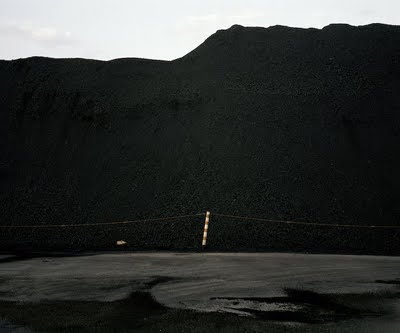Daniel Shea
Wednesday, 12 August 2009
Work from Removing Mountians.
Check out his work on NPR here.
“In the summer of 2007 I began shooting a body of work examining the coal industry in Appalachia. What started as an interest in the modern coal mining process known as mountaintop removal quickly evolved into an extensive study of the social/political institutions surrounding these practices. Above all else, I became interested in surveying the cultural implications of extracting coal from Appalachian Mountains. What I found over the course of the trip was that these coal mining operations had rapidly developed into one of the most destructive and pervasive forms of modern industry in the world.
Coal, the number one energy-based resource domestically, is responsible for mass environmental destruction, and some, if not most of the United States would suggest that it’s a necessary sacrifice. Consider our energy-usage on a daily level, which is more than likely powered by coal-burning power plants, fueled by coal from the Appalachian region. The issue’s complexities clearly go above and beyond this apparently less-than-polemical “sacrifice.” The human cost, above all, presented itself clearly and potently, rendering notions of “necessary evils” and “sacrifices” relatively useless political rhetoric.
Appalachian culture is historically defined through coal practices and popularly defined by an unfair misconception about its people and the conditions in which they live. In reality, I found communities sustaining culturally rich legacies, and I was fortunate enough to observe from the periphery, as a witness. Over the course of three months, I became more involved with the people I was around, and was quickly shown nothing short of Southern hospitality. A lot of these photographs represent time spent in these quiet and dauntless communities. In terms of mountaintop removal, I found people both embracing and vehemently opposing these practices. Even more did not fit this neat polarization, but undoubtedly the ideological and economical battle was and still is being waged ferociously in the mountains.
As for my approach, I embraced the histories of my medium, and set out to essentially make a social documentary narrative filtered through an ongoing evaluation of the historical delineation of landscape, and a strong recognition of the image’s influence in Western visual culture. My goal is to build a narrative out of context, where my point of view, and my limited perception are not ignored. After all, I consider this body of work to be art about a political issue, not political art. By default, many associations will immediately be made, but my hopes are that the viewer will eventually look at the group of photographs as a complex series of potential contingencies, much like the issue being dealt with.” – Daniel Shea




